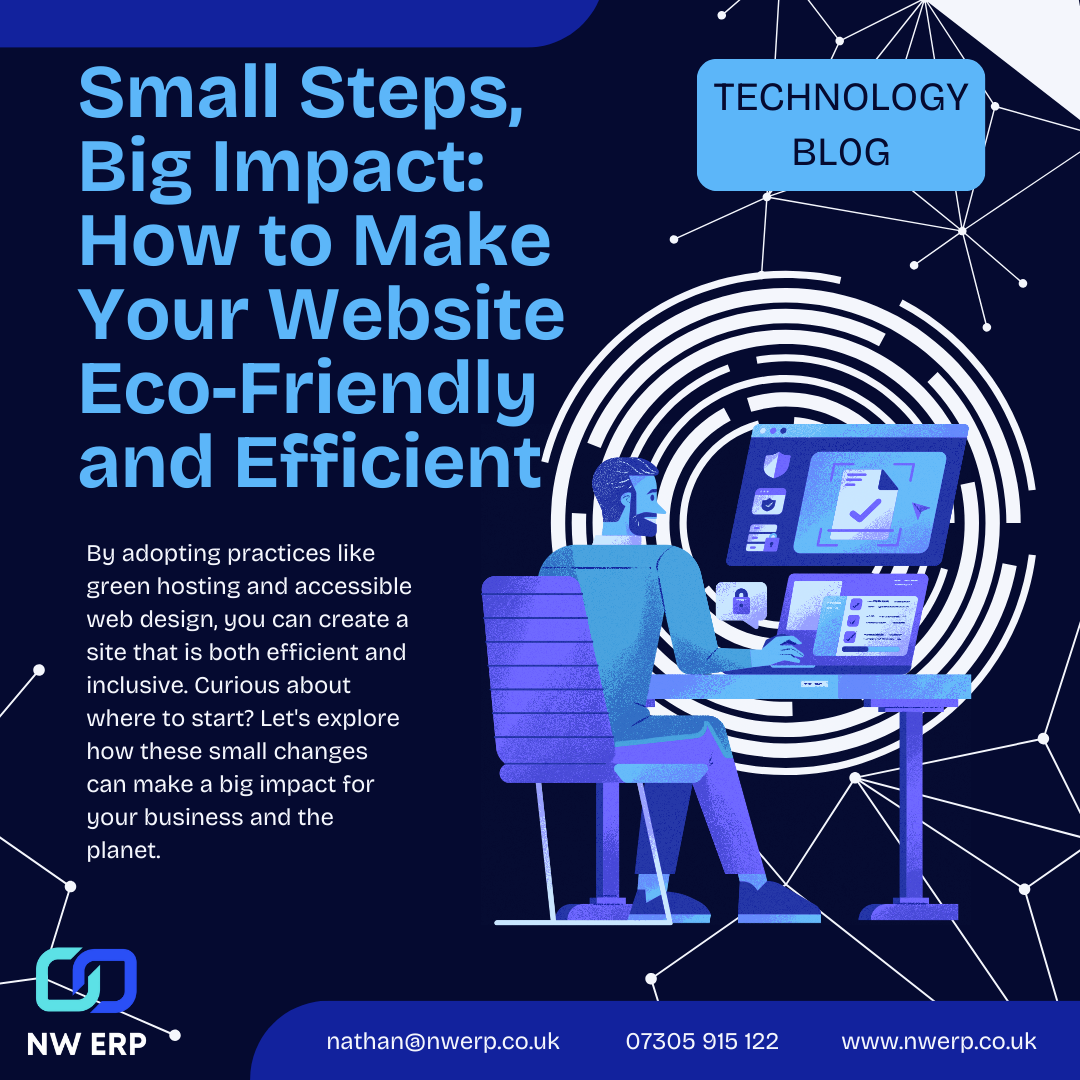 14 July, 2025
14 July, 2025
In today’s digital world, how your website performs isn’t just a matter of user experience; it’s also a reflection of your commitment to sustainability. With consumers becoming more eco-conscious, businesses are under pressure to ensure their digital presence is green and responsible. An eco-friendly website can significantly reduce your digital footprint by optimizing energy usage without compromising on performance. By adopting practices like green hosting and accessible web design, you can create a site that is both efficient and inclusive. Curious about where to start? Let’s explore how these small changes can make a big impact for your business and the planet. For more information on creating sustainable websites, check out these best practices.
Digital sustainability is about creating and maintaining websites that are environmentally friendly and energy-efficient. This section explores why eco-friendly websites are crucial and how you can reduce your digital footprint.
In our increasingly digital world, websites consume significant energy. Every click, every page load, and every data transfer contributes to carbon emissions.
Sustainable Web Design reports that if the internet were a country, it would be the 7th largest polluter. This startling fact highlights the urgent need for eco-friendly websites.
By creating sustainable websites, businesses can reduce their environmental impact while often improving user experience and site performance. It’s a win-win situation that aligns with growing consumer expectations for corporate responsibility.
Reducing your digital footprint involves a combination of smart design choices and efficient hosting solutions.
Start by auditing your current website. Tools like Website Carbon Calculator can help you understand your site’s environmental impact.
Next, focus on optimizing your site’s content. This includes compressing images, minimizing video use, and streamlining your code. These steps not only reduce data transfer but also improve load times.
Consider implementing a content delivery network (CDN) to reduce the distance data needs to travel. This can significantly cut energy consumption while improving site speed for users worldwide.
Optimizing your website’s performance is key to reducing its environmental impact. This section covers simple changes you can make and the importance of green hosting.
Creating an energy-efficient website doesn’t require a complete overhaul. Small tweaks can make a big difference.
First, focus on your images. Compress them without sacrificing quality and use modern formats like WebP. This can dramatically reduce file sizes.
Next, minimize your use of custom fonts. Each font file adds to your page weight. Stick to system fonts where possible, or limit yourself to one or two custom fonts.
Consider implementing lazy loading for images and videos. This technique loads content only as the user scrolls, reducing initial page load and energy consumption.
Finally, regularly audit and remove unnecessary plugins or scripts. Each extra piece of code adds to your site’s energy consumption.
Green hosting plays a crucial role in website sustainability. It refers to hosting services that use renewable energy sources or offset their carbon emissions.
When choosing a host, look for providers that use renewable energy for their data centers. Some hosts even plant trees to offset their carbon footprint.
Green hosting not only reduces your website’s environmental impact but can also improve its performance. Many green hosts use modern, energy-efficient equipment that can boost your site’s speed.
Remember, the greenest energy is the energy you don’t use. So, combine green hosting with efficient design for maximum sustainability.
Accessible web design is an essential part of digital sustainability. It ensures that your website can be used by everyone, regardless of their abilities or the devices they use.
Inclusive web design is about creating websites that everyone can use, regardless of their abilities or circumstances.
Start by considering diverse user needs. This includes visual, auditory, motor, and cognitive impairments. Each group may interact with your site differently.
Use clear, simple language and a logical structure. This helps all users, but especially those with cognitive impairments or those using screen readers.
Ensure your site works well on different devices and browsers. This inclusivity extends to users with older technology or slower internet connections.
Remember, accessible design often leads to better design for everyone. Features like clear navigation and readable text benefit all users.
Implementing key accessibility features can significantly improve your site’s usability for all visitors.
Use proper heading structure (H1, H2, H3) to create a clear content hierarchy.
Provide alt text for images to describe them for users who can’t see them.
Ensure sufficient color contrast for text readability.
Make your site keyboard-navigable for users who can’t use a mouse.
Consider using ARIA (Accessible Rich Internet Applications) attributes to provide additional context for screen readers.
Test your site with accessibility tools and real users with disabilities. Their feedback can be invaluable in identifying areas for improvement.
For more detailed guidance, check out these 10 ways to make your website more sustainable, which includes accessibility tips.
By implementing these changes, you’re not just making your site more accessible. You’re also making it greener. Accessible sites often have cleaner code and faster load times, which translates to lower energy consumption.
Remember, sustainable web design is an ongoing process. Regularly review and update your site to ensure it remains efficient, accessible, and eco-friendly.
Have questions about optimising your business with ERP, SaaS, Ecommerce or automation? Looking for ways to cut costs, improve efficiency, or enhance customer service.
Contact us today to discuss your needs and discover how we can help your business thrive.
No Obligation – Just a friendly chat to explore possibilities.
